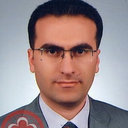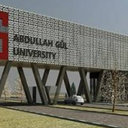Cardiac findings in children with Crimean-Congo hemorrhagic fever.
Palavras-chave
Resumo
BACKGROUND
Crimean-Congo hemorrhagic fever (CCHF) involves the multi-organ systems. The involvement of the heart in adult patients has been described previously. We investigated the electrocardiographic and echocardiographic findings of pediatric patients with CCHF.
METHODS
Patients younger than 16 years of age diagnosed with CCHF were enrolled in the study. The diagnosis of CCHF infection was based upon typical clinical and epidemiological findings and serological tests. All patients underwent a thorough cardiologic evaluation. A standard 12-lead electrocardiography and echocardiography were performed.
RESULTS
Twenty-three consecutive patients who were hospitalized with diagnosis of CCHF were enrolled in the study (mean age: 12±2 years, 6 female). All electrocardiographic parameters were within normal ranges according to age. Seven patients (30%) had minimal (<1 cm) pericardial effusion. Fifteen (65%) patients had segmental wall motion abnormalities (hypokinesia). A second echocardiography revealed that all wall motion abnormalities had disappeared; the pericardial effusion persisted in only 2 of 7 patients (28%).
CONCLUSIONS
Cardiac involvement appears to be more frequent in children with CCHF disease than in adults, but it is slighter and almost totally reversible; however, the course of the disease in children is milder than it is in adults.



